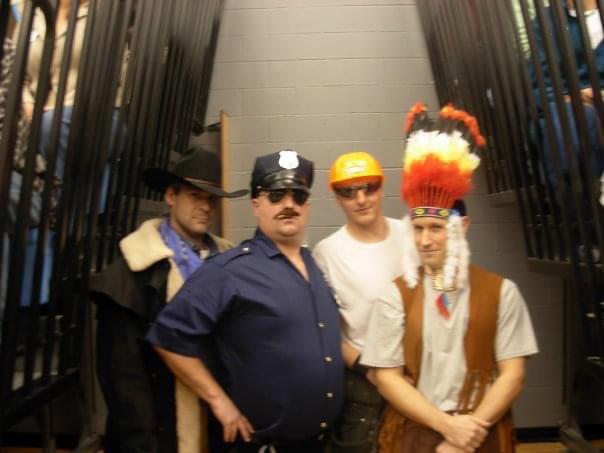
4 minute read
BACK IN THE DAY
Westminster teachers provide stories and insight to describe the atmosphere of life
before the shiny, newly-built campus. old campus as a whole. It was not the brand new building on 70 Anna Grace Likes sprawling acres, but it was loved and missed once it was gone.
Advertisement
Editor-in-Chief
Any junior or senior knows that, when going on a college tour, they always share some information about the dorms. There’s usually two general options: a modern or a community-style dorm. The guides rave about the spiffy amenities in the newly-built modern dorms, but then there’s the ancient, dusty, community-style dorm building. Surprisingly, though, on every tour I’ve been on, the tour guides always say that community-style is more fun than the modern option. Students bond through seeing each other on the way to the bathroom each night and being forced to interact with everyone on their fl oor. This is the best analogy for describing the difference between the Westminster at 800 Maryville Center Dr. and the Westminster of the pre-2011 past.
At the old campus, everything was tightly compacted. One long hallway spanned the entire building, and teachers all shared a classroom with at least one “roommate.” In order to go upstairs, there was one main stairwell where everyone had to pass each other. It was a similar atmospere to a community-style dorm. Now, on the school’s beautiful, newer campus, it’s nearly impossible to see everyone every day. “The faculty is still really close, but the biggest thing is that we don’t see each other,” said Chris Knerr, AP European History teacher.
Becasue of the school’s size and layout, it is now more of a challenge than it was before to have meaningful relationships between the faculty. Some teachers have bridged this gap by forming lunch groups and before-school breakfast chats, but these have to be planned, not forced through bumping elbows in the hallway or sharing a classroom. “There’s nothing effi cient about relationships, and that’s a good thing, but what we gain in effi ciency with having our own classrooms and teachers lounges, we lose in closer relationships,” said Dan Burke, 11th/12th grade principal and English teacher.
Don’t be mistaken–the school needed to evolve with the times and morph into something that provided a higher quality experience for everyone. But there’s an aspect of the old campus that seemed to be homey, quaint, and rustic–and that was lost when the polished, new campus was introduced. “The way I would describe it is that it was a lot less button-down there,” said Knerr.
When describing the old campus’ wall-mounted AC units, Knerr lovingly described them like “an old, beat-up Honda–the thing’s total crap on the outside…but it still hums.” “... and you can’t imagine giving it up,” added Luke Davis, Bible Dept. Chair. This notion can seemingly be applied to the The aspect of the old campus that many teachers miss most is the lighthearted, mischievous fun had by the faculty. Projectors were tossed in fi sh tanks, clocks were broken with tennis balls, lights were turned off on teachers in the bathroom…the list goes on.“We tried to fi ll the fi sh tank with every foreign object we could [...] and lo and behold all the fi sh died,” said Knerr. “You had the capacity to do (L-R) Scott VonderBruegge, Warren Smith, Dan really stupid things in Legters, and Chris Knerr pose in their Spirit Week costume at the old campus. a short period of time,” Image courtesy of Chris Knerr he added.
This stupidity was accelerated by the closeness. But another benefi t of this tight-knit community was the way faculty were able to so intentionally know and support one another in times of need. “Our son, Jordan, died at 19 months of age, and the community just full-on pulled around us. Within a couple of days everyone had raised money for funeral expenses,” said Davis.
It isn’t that this wouldn’t happen today…I can think of several instances as a student where I remember the community coming together to serve someone who needed it. The atmosphere there and the way teachers knew each other more intimately was simply a different time.
“I think the world changed around us,” said Burke, describing the change in culture and technology that occurred around the time of the move. Before, emails were a fairly new concept, and teachers like Knerr and his partner-in-crime (former Westminster teacher Warren Smith) used this to their advantage to send mass-email pranks to the faculty. Most did not quite know how to use technology for its intended purpose, and out of that grew a community that pranked, hand-delivered notes, and talked in-person often.
“We used to have faculty devotions in a classroom, and now faculty devotions are in the theater,” said Ken Boesch, US Government Teacher. “And everyone’s got 10 seats between them,” added Scott VonderBruegge, Director of Educational Technology and Curricular Innovation. This paints a picture of the gradual change from old to new. While the new campus provides a space where students can explore their interests in a way the old campus could have never provided, some closeness has been lost along the way. OPINION 9

